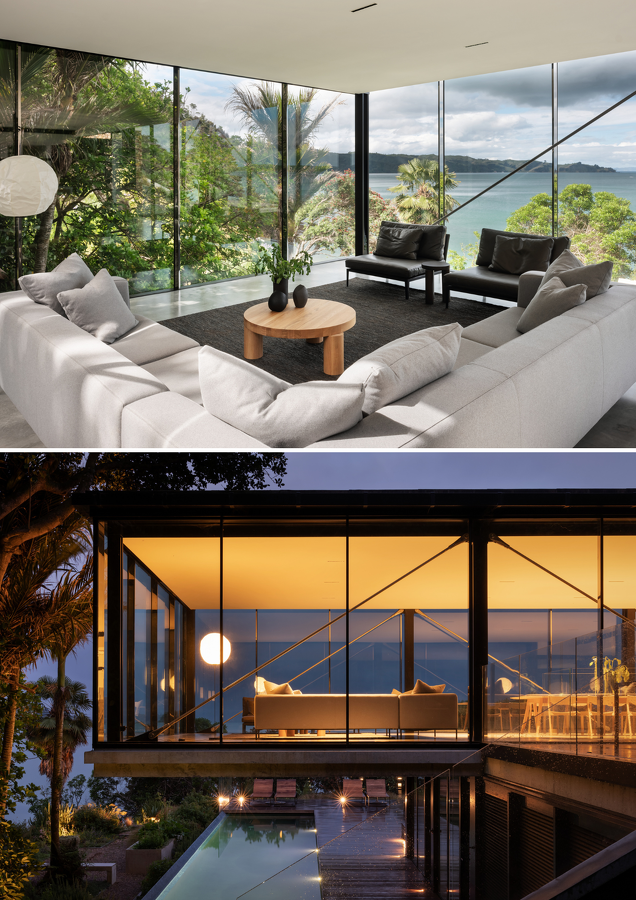Understanding Glazing Options for Glass Windows & Doors in New Zealand
Date: 7 Oct 2024
At Windowmakers, we source our glass from AGP (Architectural Glass Products), a sister company of our primary supplier, APL. All glass used in our aluminium doors and windows features The AGP System®, AGP’s high-performance double glazed window solution that ensures high quality windows and doors for warmer, drier, and healthier homes.
We’re fortunate that AGP produces this glass in their purpose-built facility in Cambridge, which spans over 40,000 sqm. The facility employs advanced automation to ensure precise production of glass for windows and doors with minimal human contact, resulting in a superior product.
In this article, we will explore the various glazing options available for glass windows and doors in New Zealand, highlighting what’s available and what is required by the New Zealand Building Code (NZBC) for your project. We will also recommend glass window and door applications based on aesthetics, energy efficiency, safety, and privacy considerations.
Float Glass.
Float glass, or ordinary glass, is commonly found in older homes and remains a standard choice today for glass windows and doors. Despite being annealed for stability, it is still susceptible to breaking into sharp, dangerous shards under stress or impact. This makes annealed glass unsuitable for glass window and door applications like cat-flap panes.
Float glass is imported into New Zealand, where it undergoes a heat treatment process to be toughened, increasing its strength, and/or treated for specialised finishes.
Safety Glass.
Glass is classified as a hazardous building material in the NZCB, making safety glass mandatory for glass windows and doors in high-risk areas prone to human impact, including glass doors, glazed partitions, overhead glazing, and structural glazing.
In New Zealand, there are two main types of safety glass:
- Laminated Safety Glass: This type includes a thin layer of vinyl between two panes of glass, which keeps the glass intact if broken, reducing the risk of injury. Laminated glass also offers added security, noise reduction, and UV protection.
- Toughened Glass: This glass is heat-treated and rapidly cooled to enhance its strength. If it breaks, it shatters into many small, relatively harmless pieces instead of sharp shards.
Safety glass, whether laminated or toughened, is marked with a compliance logo featuring NZS 4223.3. Glass without this marking may not be safety glass and should be replaced if located in a required area. For additional security, options like laminated glass and security films are available, particularly for glazed exterior doors.
Low-E Glass.
Low-E window and door glass features a very thin layer of low-emissivity material applied to one side, which reduces the transfer of heat or cold through the glass. Think of it as an invisible insulation barrier that helps maintain a more comfortable indoor temperature. To protect the coating, Low-E glass needs to be enclosed within a double-glazed window unit, allowing for larger glass windows and doors while reducing heating and cooling costs. Low-E glass must also be installed with the coating facing the correct direction.
Low-E glass is required in windows and doors under the latest NZBC H1 standards, improving the R-value for better energy efficiency. Low-E glass is also important in dwellings with a high window-to-wall ratio (WWR), where controlling solar heat gain is important for maintaining home comfort.
Low-E glass comes in various thermal performance levels. At Windowmakers, we offer two options: Solux-E® and Solux Ultra™. Both are applied to the inside of the exterior pane of the double-glazed window, protecting it from the elements. They enhance insulation by reflecting heat back inside during winter, reducing heat loss through the glass, and limiting overheating during summer.
For more information on our Low-E double-glazed windows, an integral component of The AGP System® high-performance glass, please click here. When combined with our ThermalHEART® thermally broken window frames, this aluminium joinery and glass pairing can nearly double the thermal performance of your aluminium doors and windows, significantly enhancing energy efficiency and comfort in your home.
Explore our ThermalHeart+ package, which includes thermally broken window frames and advanced double-glazed window technology. Click here for more information.
Tinted Glass.
Tinted glass offers several benefits, including reduced UV radiation, lower visible light transmission, and enhanced privacy. These features make it an ideal choice for glass windows and doors in buildings exposed to intense sunlight or where increased privacy is a priority.
Tinted glass can become excessively warm, so it is often heat-treated for protection. It can be combined with Low-E glass in insulated glazing units (IGUs) to improve thermal control.
Decorative & Textured Glass.
Float glass is available in frosted or patterned finishes, adding both decorative appeal and privacy to glass windows and doors. It is often used for privacy in bathrooms, offices, and decorative applications. Some patterned window and door glass options can be toughened, and all can be laminated.
Selecting the right glass for your high-quality windows and doors requires a thorough understanding of your space’s unique needs, from a personal and functional standpoint, as well as meeting industry regulations. With over 20 years of experience, the team at Windowmakers is well-versed in industry best practices and stays up to date with all code requirements. We ensure the glass you choose for your aluminium doors and windows not only meets your needs but also complies with all required industry standards.
Click here to get in touch with our team today.

